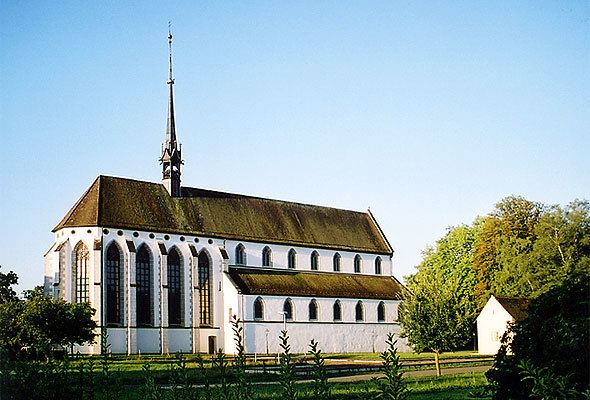Phone +41 848 871 200 | ||
 | ||
Burials Agnes of Austria, Elizabeth of Carinthia, Queen of Germany, Elisabeth of Austria, Duchess of Lorraine Similar Legionärspfad Vindonissa, Vindonissa, Habsburg Castle, Vindonissa‑Museum, Museum Aargau | ||
K nigsfelden monastery in windisch switzerland
Königsfelden Monastery is a former Franciscan double monastery, which housed both a community of Poor Clare nuns and one of Franciscan friars, living in separate wings, in the municipality of Windisch in the canton of Aargau in Switzerland. It was founded in 1308 by the Habsburgs. In the course of the Protestant Reformation in Switzerland in 1528 it was secularized, and the complex was then the residence of the bailiffs of Bern.
Contents
Since 1868 the former monastic buildings have served as a psychiatric clinic. The monastery church was converted into a museum in 2009. It contains a set of 14th-century stained glass windows which, together with the windows in the Cathedral of Bern, are considered the most valuable in Switzerland.
History
On May 1, 1308, King Albert I of Austria was murdered by his nephew John Parricida in the community of Windisch. In memory of this event his widow, Elizabeth of Carinthia, founded the monastery about 1310-11 at the site, approximately 200 meters (660 ft) from Brugg. The monastic complex centered around the contemplative life of the nuns, while the small community of friars tended to both their spiritual needs and that of the surrounding community.
Albert and Elisabeth’s oldest daughter, Agnes of Austria, the widow of King Andrew III of Hungary, moved to Königsfelden in 1317 and helped it to thrive, but did not join the monastery.
With the conquest of the Western Aargau by the city of Bern, the monastery lost its connection with the Habsburg family. It was abolished in the course of the success of the Reformation in Switzerland in 1528. The complex then served as the seat of the Bernese bailiffs of the Königsfelden district, a steward took over the administration of former monastic property.
In 1804 the former monastery became the property of the canton of Aargau, which had been founded in the year before. The new canton established a mental hospital. In 1872 a new building was built and since 1887 it has been a psychiatric clinic. During the construction a large part of the Franciscan monastery was demolished.
